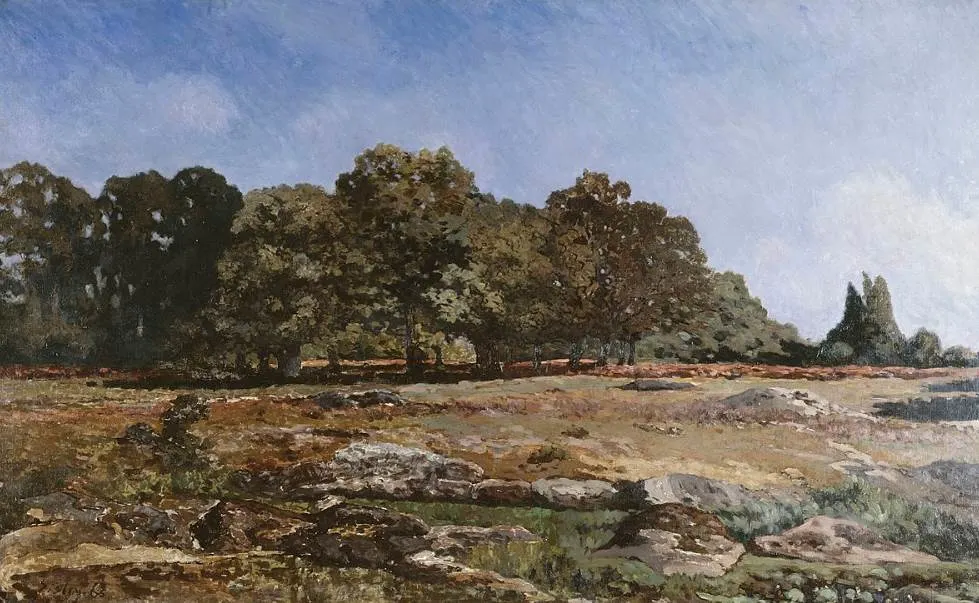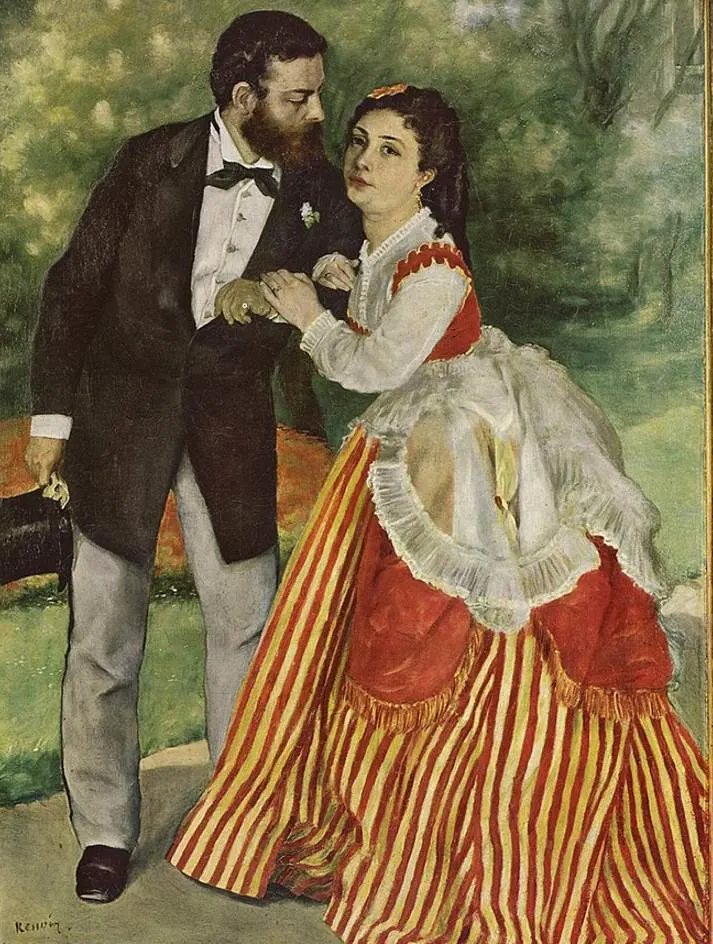Born and raised in Paris, this English artist only spent brief periods in his native country as he lived and worked most of his life in France.
Alfred Sisley (1839-1899) was one of the leading Impressionist artists of the 19th century and his entire oeuvre almost exclusively consists of landscape paintings.
The beautiful French landscape just outside of Paris was where he spent most of his time, although he briefly returned to London to produce one of his most popular series.
In this article, you’ll discover the most interesting facts about Alfred Sisley, a man who produced some of the most enthralling Impressionist paintings in history.
1. He was born in Paris to British parents
Alfred Sisley was born in Paris on October 30, 1839. His father was Guillaume “William” Sisley, a silk merchant who was born in 1799 in France to an English father.
The family was well-off as the silk business was booming at the time. This upper-class status was a sheer contrast to how Alfred would spend the final decades of his life.
His mother was a woman named Felicia Sell (1810-1866) who was born in Dover and who passed away shortly after Sisley started his career as an artist in the 1860s.

2. He studied business in London but returned to Paris after 4 years
William Sisley hoped that his son would follow in his footsteps so he sent the 18-year-old Alfred to study business in London.
He moved to London in 1857 and stayed in the city for 4 years, only to return in 1861 after finally abandoning his studies.

The young Alfred had shown signs of talent in drawing and decided he wanted to pursue a career as an artist. Because his family was rich, he was able to enroll in the prestigious École des Beaux-Arts in Paris.
There he studied art under a Swiss artist named Charles Gleyre (1806-1874), an academic painter who had many promising artists in his class.
It’s here that Sisley met other important figures of the Impressionist art movement such as Frédéric Bazille, Claude Monet, and Pierre-Auguste Renoir.

3. He was one of the initial members of the Impressionist in the early 1860s
These three aspiring artists along with Alfred formed the initial group of Impressionists. They were all impressed by the paintings of Édouard Manet and the group often came together to discuss art.
This was the foundation of the Impressionist art movement that would change the history of art in many ways.
The most notable change they discussed was to start painting landscapes outdoors instead of in a studio. Because of this, they used broad brushstrokes to highlight the natural light.

4. Alfred Sisley was one of the most notable outdoor painters of the 19th century
Sisley continued to follow these initial ideals of the Impressionists and became one of the most prolific outdoor painters of the 19th century.
His initial landscape paintings were rather gloomy and often used dark pigments. This in combination with the fact that he integrated visible brushstrokes into his works came as a shock to the general public.
Although his style remained the same, his color palette gradually changed over the years as his paintings became much brighter and often included vivid colors.
Alfred and the other Impressionists were often ridiculed in the beginning and it took until 1868 before his first paintings were accepted at the Paris Salon.

5. He found a partner in 1866 but a devastating event in 1870 changed his life indefinitely
Success in his artistic pursuit hadn’t come yet, but he was doing quite fine because he had the helping hand of his father who supported him financially.
During this period, he also met his girlfriend, a Breton woman named Eugénie Lescouezec (1834–1898).
They started a relationship in 1866 and the couple had two children, a son named Pierre (born 1867) and a daughter named Jeanne (1869). Alfred and Eugénie didn’t marry until 1897 during a trip to Wales.
The cozy life of Alfred ended when the Franco-Prussian War broke out in 1870 and his father’s business went bankrupt.
From that point, he continued to rely on the sale of paintings for his income and the couple lived in relative poverty for the rest of their life.

6. He visited England several times and produced many paintings there
The early 1870s were a pretty bad period for Alfred and his family. The Impressionists only started gaining some recognition among patrons and he had to scrape by to make a living.
The first exhibition of the Independent group of Impressionists happened in 1874 and this allowed Sisley to sell some paintings.
This was the year that he spent several months in England, more specifically at East Molesey just southwest of London.
He completed over 20 oil paintings during this trip, including “Molesey Weir – Morning,” “Regata at Molesey,” and “Under the Bridge at Hampton Court.”

7. He remained a British citizen until he passed away in the late 19th century
Sisley visited England another time in the early 1880s and finally in 1897 when he stayed in Wales for an extended period of time.
He got married at Cardiff Register Office on August 5, 1897. The year after his return to France, he applied for French citizenship but was rejected.
He probably would have been awarded French citizenship during the second application but he became terminally ill with throat cancer and died on January 28, 1899.
This was only a few months after his wife Eugénie died in 1898. Both are buried at the Moret-sur-Loing Cemetery where the coupe lived during the final years of other lives.

8. The prolific artist completed over 900 paintings during his career
Sisley died at the age of 59 and only really picked up his brushes after an extended stay in London which lasted until his early 20s.
During his career, the prolific artist still managed to paint over 900 oil paintings and 100s of drawings. He also completed over 100 pastels as well.
Related: Check out some of Alfred Sisley’s most famous paintings.

